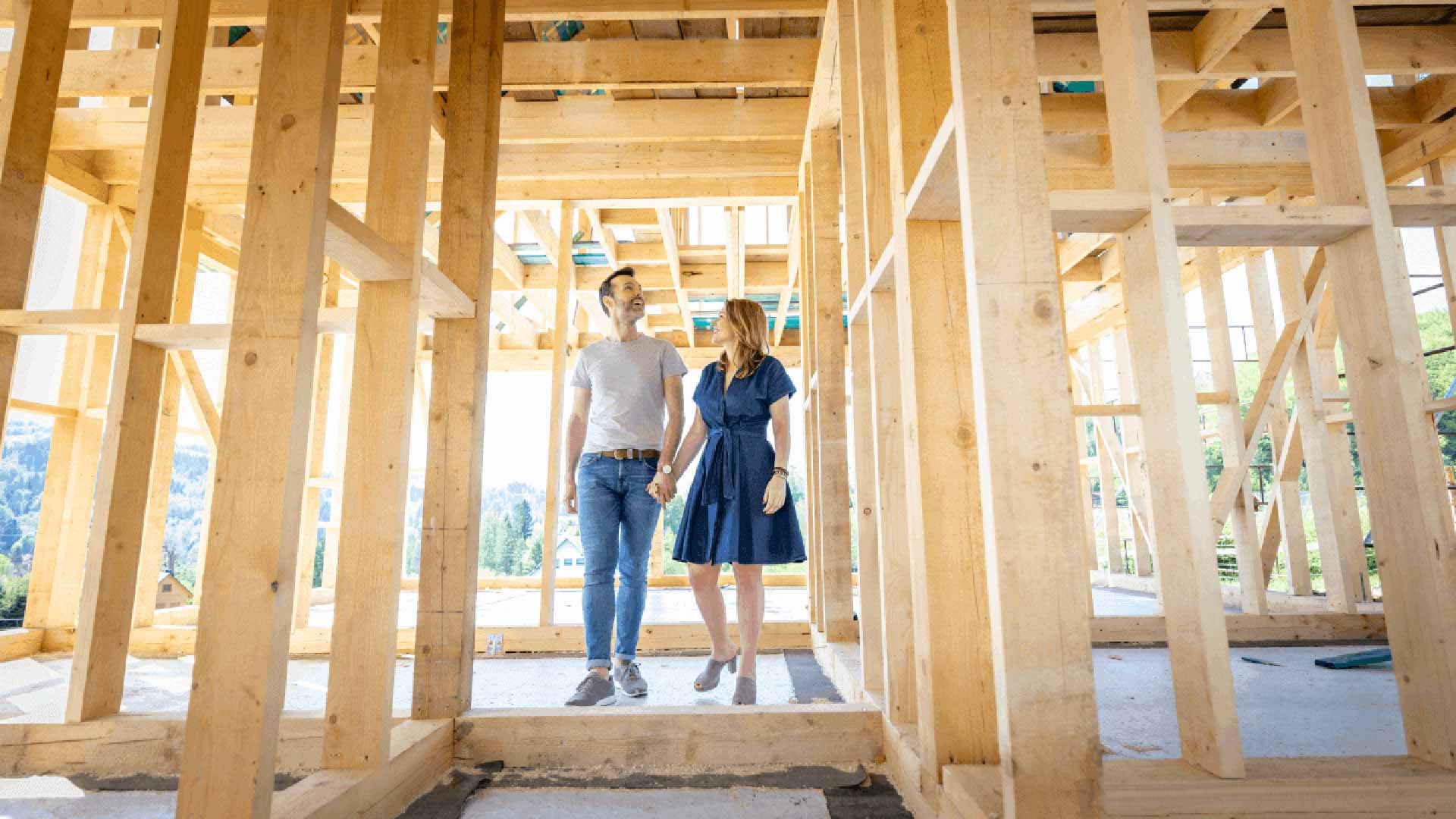Whether you’re building a new home or renovating, it’s important to incorporate energy-efficient features into the design of the home. This can help you save a considerable amount of money on your heating and cooling costs in the long run.
According to the Australian Building Codes Board, new home builds and renovations need to meet the minimum level of energy efficiency before they can be occupied. You can visit the online BASIX (Building Sustainability Index) system to calculate if your home complies with minimum energy and water requirements. As of October 2023, the National Construction Code (NCC) will require new homes to increase from six to seven stars in regard to energy efficiency. However, there are builders who now offer 8-star energy-efficient homes. Depending on which state you’re building in, this will increase the total cost of building a new home, but it can save you roughly 20-27% in thermal costs. Furthermore, you’ll be able to live more comfortably in a home that’s warm in winter and cool in summer.
Ways you can make your home energy-efficient
Insulation
Insulating the home, whether it’s old or new, reduces your energy usage and bills. Insulation reduces the amount of heat that enters your home in summer and traps warm air in winter.
Use a high R-value cladding material
Cladding materials used for insulation have an R-value (measure of thermal resistance). For materials with a high R-value, it will take longer for heat or cold to enter them. Wall, floor and ceiling claddings include air-cell blankets, loose fill/pulp, sarking (reflective foil), steel sheets and batts. Building claddings include core-filled concrete block work, double brick, mud brick, sandstone and hay bales. They help make the house cool in summer and warm in winter because of their thickness. They can also draw on the temperature of the ground and radiate that into the home.
Good subfloor construction
The subfloor beneath your house should be constructed correctly in order to keep energy costs down. If your house is built on brick piers, then clad the subfloor perimeter so that air doesn’t flow too freely. This will reduce your heating and cooling requirements. Laying a concrete slab on the ground makes for an energy-efficient subfloor as it can draw on the ground temperature and radiate it into the house.
Cross-ventilation
Use high ceilings, wide hallways, and bi-fold or sliding stacker doors to provide more space for air to circulate. Install doors and windows that you can open on both sides of the home to allow natural airflow, which will help cool the house down faster. Also, choose curtains that provide good airflow between the window and internal spaces. They cover windows well and save you energy.
Install ceiling fans
Install ceiling fans in the living and dining rooms and in the bedrooms. A ceiling fan is cheaper to run (2 cents per hour) than an air conditioner (52 cents per hour). Prices will vary depending on your electricity provider.
A light-coloured roof and airlocks
A dark-coloured roof attracts heat and becomes hot in summer. A light-coloured roof reflects heat, making it more energy-efficient. When designing your home, include air locks so that spaces like the living and bedroom areas can be thermally separated from each other.
Install a truss roof and whirlybird
The shape of your roof can help control the temperature inside the house. A truss roof with large cavities can insulate the home better than other roof types. Roof ventilation removes excess heat from the roof, which prevents hot air from radiating through the ceiling and reduces your energy requirements. You can also install a whirlybird on the roof to reduce the build-up of heat in the ceiling cavity.
Green your roof
You can also consider having a grass-covered roof to insulate the home and reduce your energy consumption.
Sun and house orientation
When positioning your home on the block, make sure the front is facing south and the back is facing north. This will ensure that you have the right amount of sunlight entering the house on all sides. Positioning your home correctly on the site can reduce your electricity bills. For example, when building a new home in Australia, it is recommended to face your main living areas north. This is because you will receive the most sunlight during the winter and can be easily shaded during summer.
Windows and doors
If your home receives a lot of sunlight, use roof overhangs for windows and doors with a 900mm shading depth. If your living areas face west, consider planting trees on the western side, 10m from the house. They can block out the summer sun and allow winter sunlight to enter the home.
You can also prevent heat from escaping in winter and hot sunlight from entering in summer by:
- Placing small windows on the west and south sides
- Installing big windows on the north side
- Putting medium-big windows on the east side
- Installing extended eaves, an awning or a louvre system on the west side
- Using skylights where necessary
Rooms
To allow more natural light to enter the home, build laundries, bathrooms and storerooms on the west or south side of the house. These rooms can be cut off to block the western sun or the cold air from the south. Build bedrooms on the east side so people can wake up when the sun rises. For shift workers, having bedrooms on the south side is better as it will be darker in the morning. Build your living areas on the north side as most people spend their time here during the day.
Install solar power systems
These can minimise your electricity use and bills. Gas-boosted solar systems are the most energy-efficient in hot water systems. Solar panels, on the other hand, harness the sun’s natural energy. Installing solar panels on the wall or roof means you don’t have to use electricity from the grid. You also never have to run out of power again and you can reduce your risk of being affected by power surges. Have a professional install your solar panels so that you can take advantage of maximum light exposure.
Use single-glazed windows and doors
If you don’t have big windows and doors, then you’ll just need to have them single-glazed to reduce heating and cooling costs and conserve energy. They come with a standard/improved aluminium frame or timber frame, with or without an energy-efficient film.
Open or add windows
Reduce heating costs by opening windows to let in natural light and heat, and add ventilation too. You can let in more light by installing more windows, such as skylights or glass panes. If you’re extending the loft or converting the cellar, consider installing skylights.
Use energy-efficient fixtures and fittings
Choose expensive lighting and appliances, as they’re more energy-efficient and can save you a lot of money in the long run. Use LED or compact fluorescent light bulbs. They have low wattage, use less electricity and shine brighter than standard light bulbs. Also install motion sensor lights in small rooms, such as pantries, bathrooms and walk-in closets. People often forget to turn off the lights in these rooms when leaving, so motion sensors can minimise your electricity use and save you money.
Use environmentally-friendly building materials
Eco-friendly materials ensure high energy efficiency. These include cement, ceramics, bricks, aluminium, timber, steel and glass. You can further reduce your carbon footprint by using recycled materials, like fibreglass batts. When choosing windows, pick those with a wooden or aluminium frame. Aluminium frames are energy-efficient and recyclable.
Use eco-friendly accessories and furniture
Buy furniture made locally and from sustainable materials. Also ensure that the accessories you buy, such as beddings and curtains, are made using sustainable materials and methods.
Start building your new energy efficient home
An energy-efficient home design offers functionality and thermal comfort. It also reduces your energy usage and carbon footprint, which is good for the environment. Plus, you get to save money and live in a non-toxic and healthy home that’s warm in winter and cool in summer.
If you want your new home build to be energy efficient, reach out to Kitome today. We can help you through the entire process and make sure you get the home you want.





